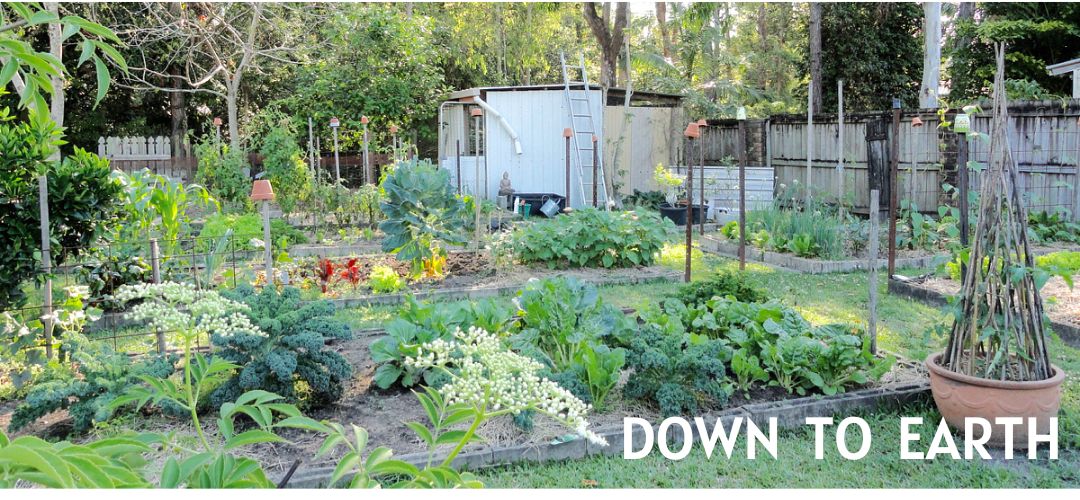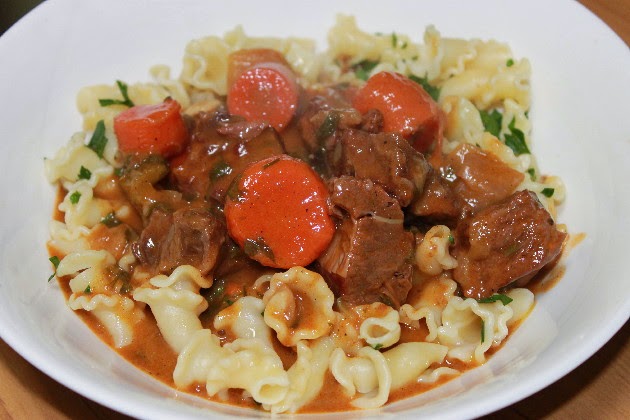This winter has been the coldest winter in a long time in many parts of Australia. Where I live, we usually have a sprinkling of days in July and August when the night time temperature falls to about three or four degrees. This year we've had much more than that, and colder. Right now we're at the end of a two week run of cold nights and winds that go right through you. Australian houses where I live are set up for the heat rather than the cold. We don't have an open fire or a heater as such; we have reverse cycle air conditioning but I don't like using it. Hanno and I disagree on the safety of wood burning stoves. I would like to have one for winter warmth, he thinks they're polluting and unhealthy.
So in times such as these, when winter winds make us all rug up, I turn to my kitchen for warmth. I make casseroles, soups, roasts and other slow cooking meals that give the impression of warmth when it's cooking, then fulfils the promise when we eat it. So far, it's kept me going.
The one dish I keep returning to on very cold days is beef casserole. It's easy to prepare, nutritious, hearty and when I cook it in the slow cooker, it takes only about 20 minutes to prepare. If you're working outside the home on these cold winter days, there would be nothing better than this dish to welcome you back home at night. If you could prepare this meal on a Sunday afternoon, and make a double portion, you'd have two excellent winter warmer meals for two of your work days during the week.
I know there are quite a few readers who don't cook much. I had an email from a young man last week who told me that it's been two years since he left home and he's only cooked three meals. I want you all to try this so I'm giving basic instructions for all the new cooks. Following this recipe will give you a superb meal that can be the basis of your expanding recipe file. Here's is the step-by-step guide on how to do it.
This ingredients list is based on a family of four to eight, depending on ages. Please adjust to your own circumstances but remember, even if it's just one or two in your family, this will sit very well in the fridge for two days or it can be frozen in portions and eaten later.
You'll need:
- about 1kg/2.2lbs gravy beef, shin beef or blade steak - cut in 5 cm/2 inch squares. Meat cooked slowly will shrink and having the meat in bigger portions helps it stay moist.
- 2 medium onions, peeled and cut into quarters
- 2 large carrots, peeled and cut into 5cm/2 inch pieces
- 2 sticks of celery, cut into 5cm/2 inch pieces
- 2 cloves garlic, peeled and crushed
- salt and pepper to taste
- 2 tablespoons plain/all purpose flour
- two tablespoons paprika - you could substitute chilli, curry power or curry paste
- ½ cup chopped parsley
Optional extras: if you have vegetables in the fridge that have to be eaten, this is the ideal dish to add them to. Any of these would be ideal - capsicum/pepper, zucchini, turnips, parsnips, a small amount of cabbage, cauliflower, kale, silverbeet/chard, Brussel sprouts, sweet potato, potatoes.
On Sunday afternoon, or in the morning before you go to work:
- Cut the meat into large squares.
- Place plain flour, salt, pepper, paprika (or chilli/curry) into a bowl and mix.
- Coat the meat in the seasoned flour.
- Put a large frying pan on the stove and add two tablespoons of cooking oil. I use virgin olive oil. When the oil is hot, but not smoking, add half the meat and brown it on all sides. Remove the meat and repeat with the other half. Remove the meat. Remember, you're just browning the outside of the meat at this point. You're not cooking it. Browning the meat will give the casserole a deep, rich flavour, so don't skip this step.
- Into the same pan, add all the vegetables and brown them for about five minutes.
- If there is any seasoned flour left over, add it and mix it in.
- Add the meat back to the pan with the vegetables. At this point, it should look like the photo above.
- Pour over enough water to just cover the meat. Not too much water, just enough to cover.
- Stir the meat until the sauce starts to thicken.
- When the sauce is thick, pour the casserole into your slow cooker, add the parsley and put the lid on. Remember, nothing is cooked at this stage. You've just developed the flavours and caramelised your ingredients. They will cook in the slow cooker.
- If you're doing this on Sunday, place the inner part of the slow cooker in the fridge at this point. Tomorrow morning as soon as you get up, take it out of the fridge and sit it on the bench for a while so it's not going on the heat straight from the fridge. Take no notice of this step if you're cooking it straight away.
- When you're ready to cook the casserole, turn the slow cooker onto the low setting if you're going to leave it all day, or high if you want to eat the meal in about four hours.
- Place the lid on. Make sure there is nothing touching the slow cooker - no tea towel or plastic cups etc.
This must cook for at least four hours but can be left all day or overnight on a low setting if you prefer. Depending on what vegetables you've included, you won't have to add anything else. But if you want to bulk this meal out a bit for the men and boys in the family you could serve it with rice, buttered noodles, dumplings, mashed potato or crusty bread. The beauty of this dish is that when you walk into your home after a hard day's work, you'll smell this cooking and you'll know you have a hearty meal ready to serve when you're ready to eat it. Ask everyone to put away their coats and bags, wash their hands, and get the children to set the table while you're mashing the potatoes and pouring the drinks.
Any leftover casserole can be placed in a covered bowl for eating tomorrow or in a freezer bag or container for eating at another time. I hope you enjoy it. Next week, I'll share an equally delicious chicken meal that can be cooked while you're out at work or busy at home with other things.




